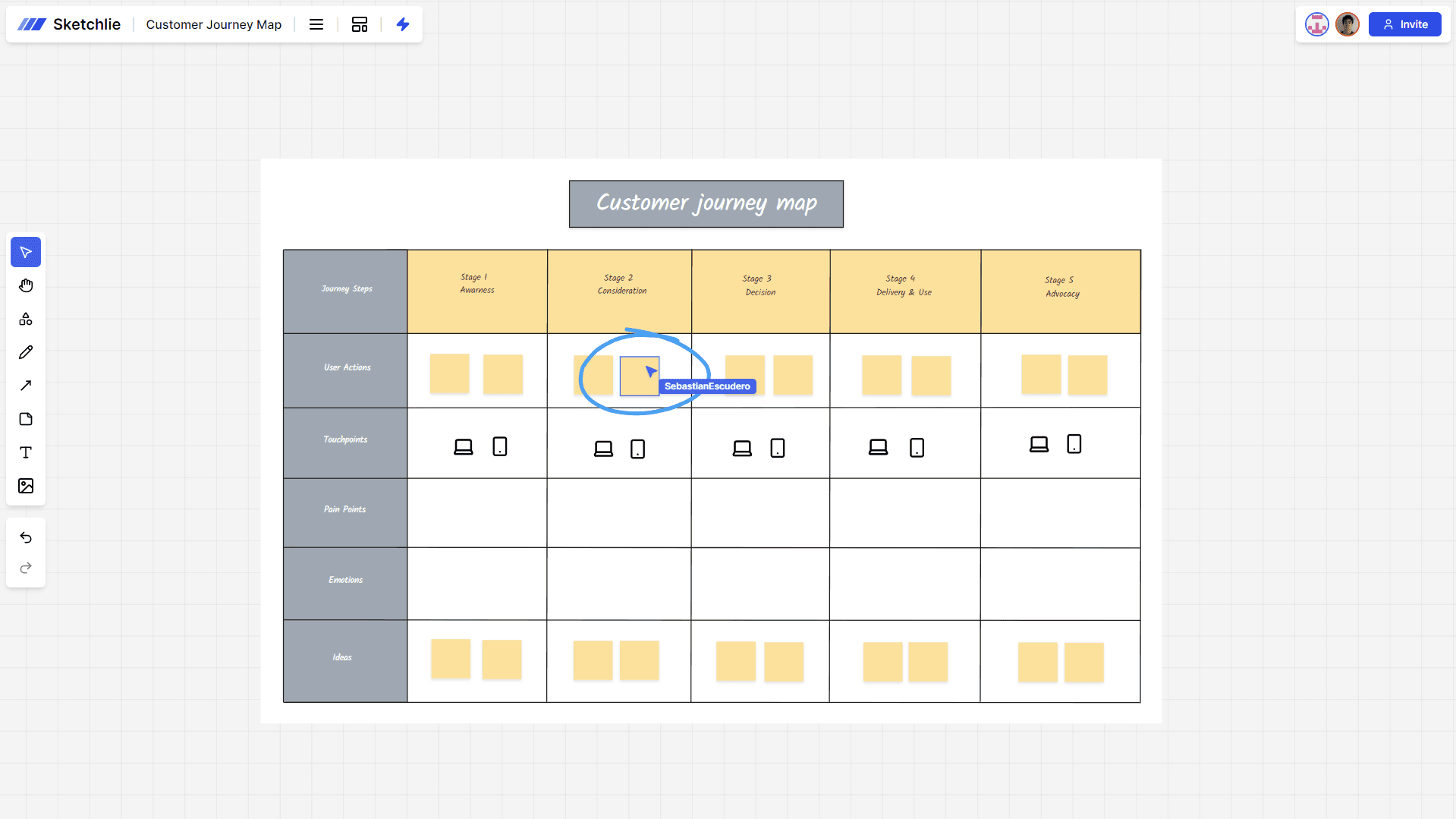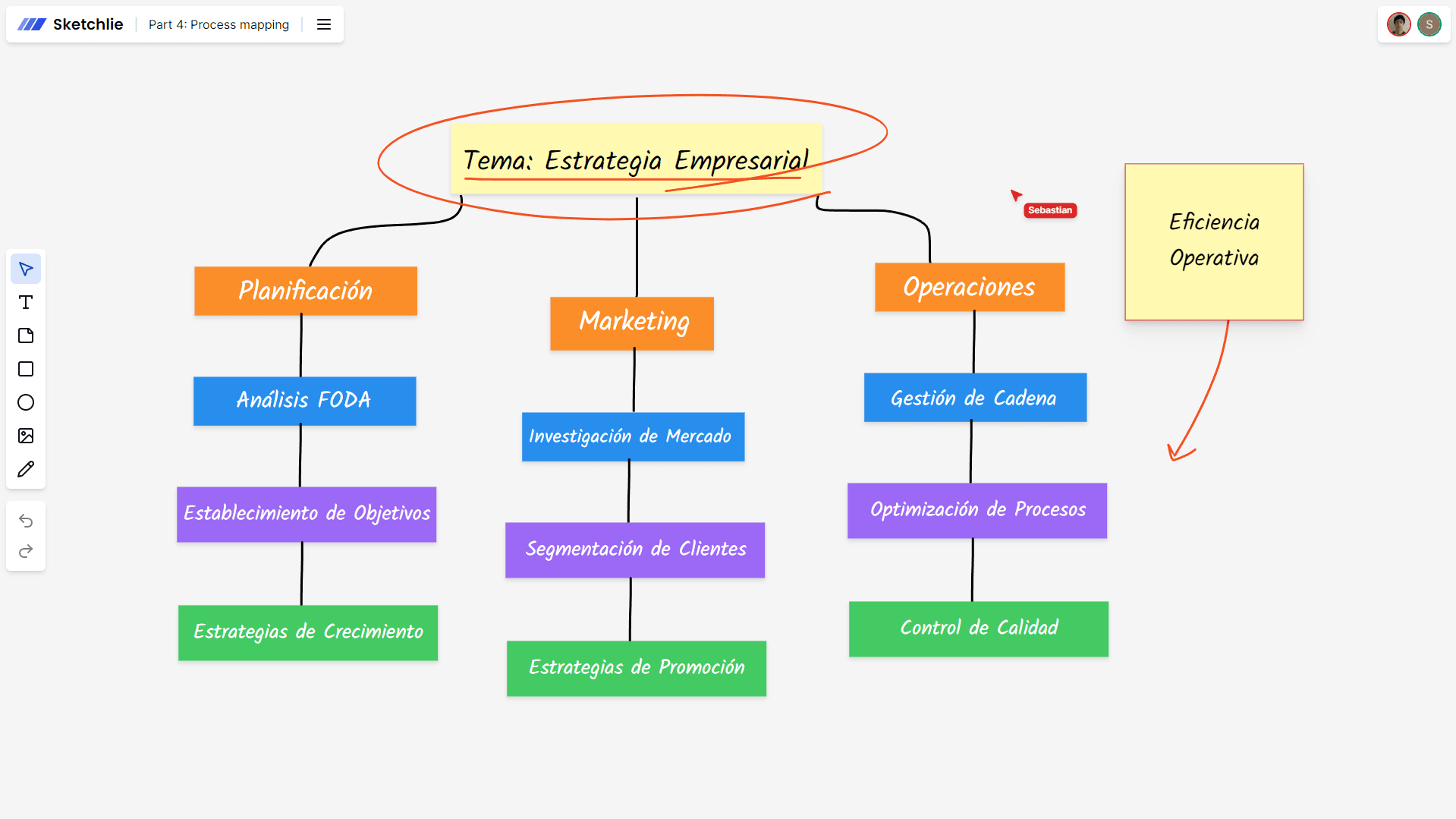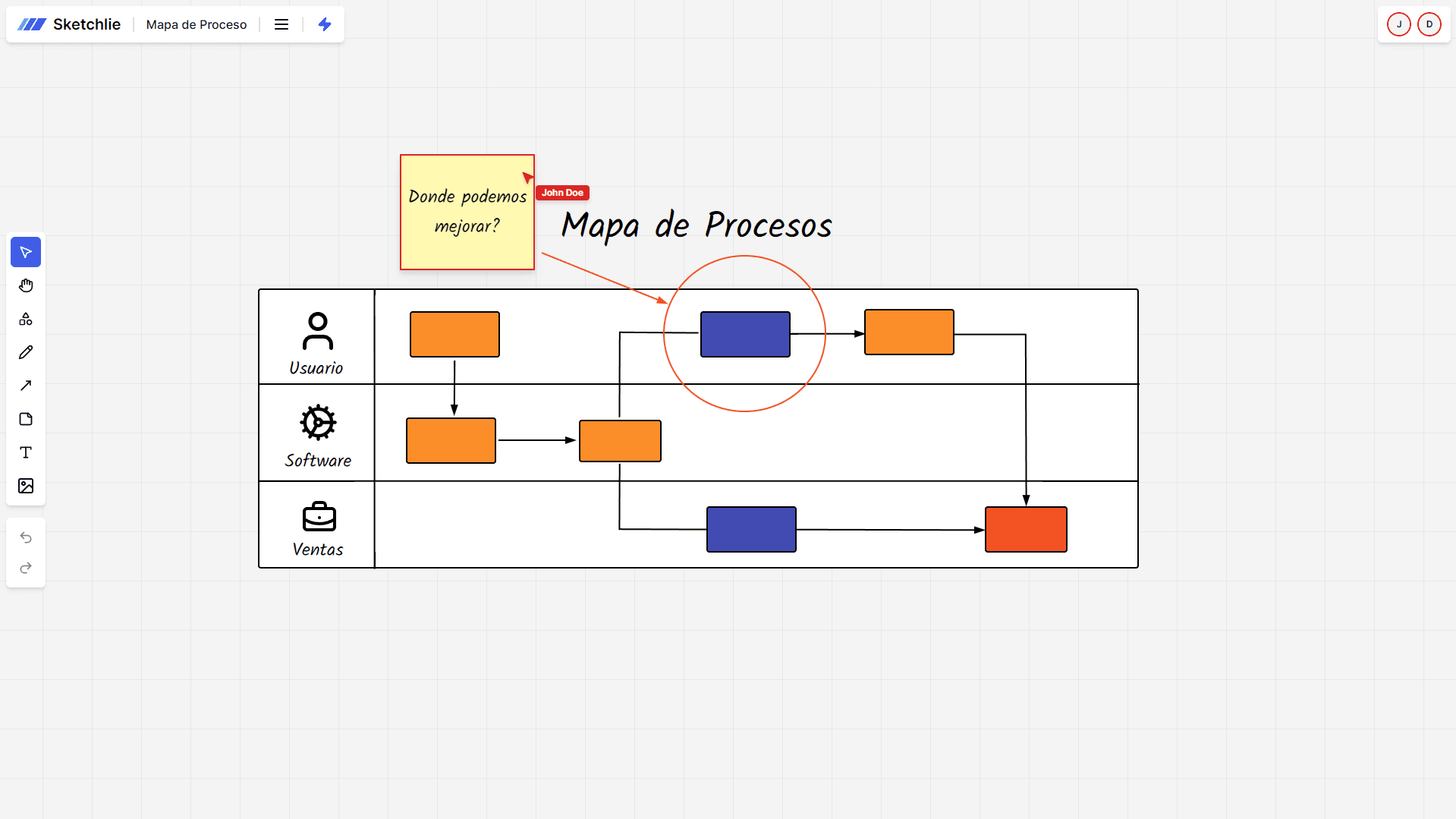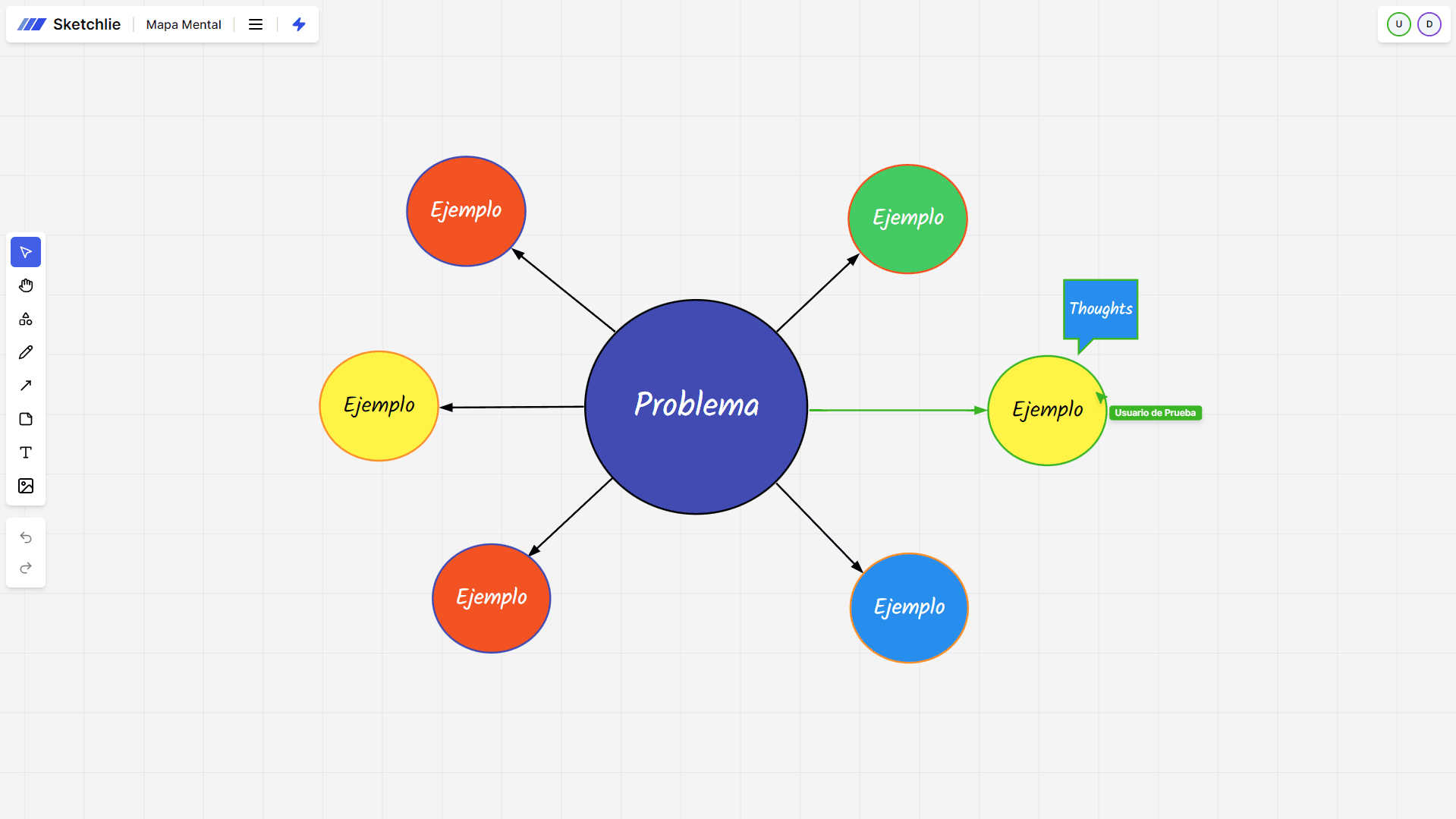- Home
- Customer journey map
- Complete Guide
Customer Journey Map: The Ultimate Guide to Improving Customer Experience

Discover how to create and use a customer journey map to transform your customers' experience, increase loyalty, and boost your business growth. This comprehensive guide will walk you step-by-step through the customer journey mapping process, with practical examples and expert tips.
What exactly is a customer journey map and why is it crucial for your business?
A customer journey map is a detailed visual representation of the complete experience a customer has when interacting with your brand or product. This map not only shows the touchpoints but also captures the emotions, needs, and expectations of the customer at each stage of their journey.
The importance of a customer journey map lies in its ability to:
- Identify opportunities for improving the customer experience
- Align internal teams around customer needs
- Optimize marketing resources and efforts
- Increase customer satisfaction and loyalty
At Sketchlie, we understand that every interaction counts. That's why we provide the necessary tools to create detailed and actionable customer journey maps that drive your business growth.
How do you create an effective customer journey map step by step?
Creating an effective customer journey map requires a systematic approach. Follow these steps to develop a map that truly drives customer experience improvement:
- Gather customer data: Use surveys, interviews, and data analysis to gain a deep understanding of your customers.
- Define personas: Create detailed profiles of your ideal customers based on the collected data.
- Identify journey stages: Determine the key phases a customer goes through, from discovery to loyalty.
- Map touchpoints: List all interactions the customer has with your brand at each stage.
- Analyze emotions and needs: At each touchpoint, identify how the customer feels and what they need.
- Identify opportunities: Look for areas of improvement and key moments to exceed customer expectations.
- Visualize the map: Create a clear and attractive graphical representation of the entire journey.
Using tools like process maps, flowcharts, and mind maps from Sketchlie, you can create a detailed and visually appealing customer journey map that captures all the crucial aspects of the customer's journey.
What are the tangible benefits of implementing a customer journey map?
Implementing a well-designed customer journey map can have a significant impact on various aspects of your business:
- Improved customer experience: By better understanding customer needs and pain points, you can create more satisfying and personalized experiences.
- Increased customer retention: An optimized journey leads to greater customer satisfaction and loyalty, which can increase retention rates by up to 25%.
- Resource optimization: By identifying the most critical touchpoints, you can allocate resources more efficiently, potentially reducing operational costs by 15-20%.
- Increased sales: A well-designed journey can increase conversion rates and customer lifetime value, with some companies reporting revenue increases of up to 10-15%.
- Improved product innovation: The insights gained can drive the development of new products or services that better align with customer needs.
At Sketchlie, we've seen how our clients have achieved these benefits and more by implementing effective customer journey maps using our collaborative tools.
How is a customer journey map used to drive concrete business improvements?
A customer journey map is not just a visualization tool; it's a catalyst for change and continuous improvement. Here's how you can use it to drive tangible improvements in your business:
- Identify and prioritize areas for improvement: Analyze the most critical pain points in the journey and rank them based on their impact on customer satisfaction and ease of implementation.
- Develop specific action plans: For each priority improvement area, create a detailed plan that includes objectives, metrics, responsible parties, and timelines.
- Implement changes iteratively: Start with small, measurable improvements and use feedback to refine and expand your efforts.
- Measure impact: Use specific KPIs such as Net Promoter Score (NPS), Customer Satisfaction (CSAT), and Customer Effort Score (CES) to evaluate the impact of your improvements.
- Update the map regularly: The customer journey evolves over time. Update your map at least every 6-12 months to keep it relevant.
At Sketchlie, we offer an online whiteboard platform where you can collaborate in real-time to create, update, and act on your customer journey map efficiently and effectively.
How does a customer journey map impact customer loyalty and lifetime value?
The impact of a well-implemented customer journey map on customer loyalty and Customer Lifetime Value (CLV) is significant and multifaceted:
- Improved end-to-end experience: By optimizing each touchpoint, you create a consistent and positive experience that fosters long-term loyalty.
- Anticipation of needs: A detailed map allows you to anticipate and meet customer needs before they become problems, increasing satisfaction and retention.
- Enhanced personalization: Journey map insights enable more personalized experiences, which can increase CLV by up to 20%.
- Reduced churn rate: By identifying and addressing friction points, you can significantly reduce customer churn rates.
- Increased cross-selling and upselling: A deep understanding of the customer journey allows you to identify opportunities to offer additional products or services in a relevant and timely manner.
At Sketchlie, we've seen how our clients have achieved significant increases in customer retention and CLV through the effective implementation of customer journey maps.
How can Sketchlie enhance your customer journey mapping strategy?
At Sketchlie, we understand that an effective customer journey map requires collaboration, flexibility, and powerful tools. Our platform is designed to meet these needs and more:
- Real-time collaboration: Allows multidisciplinary teams to work together on the map, regardless of their physical location.
- Customizable templates: We offer a variety of customer journey map templates that you can adapt to your specific business needs.
- Data integration: Connect your map with real-time data sources to keep it up-to-date and relevant.
- Advanced visualization: Use our intuitive design tools to create visually appealing and easy-to-understand maps.
- Analysis and reporting: Generate detailed reports and insight analyses to facilitate data-driven decision-making.
With Sketchlie, you're not just creating a customer journey map; you're developing a dynamic and collaborative tool that evolves with your business and your customers.
What are the best practices for maintaining and updating your customer journey map?
An effective customer journey map is not a static document, but a living tool that should evolve with your business and your customers. Here are the best practices for keeping your map relevant and useful:
- Establish a regular review schedule: Schedule quarterly or semi-annual reviews of your map to ensure its accuracy and relevance.
- Incorporate continuous customer feedback: Use surveys, interviews, and data analysis to capture changes in customer preferences and behaviors.
- Monitor key metrics: Establish KPIs for each stage of the journey and use them to identify areas that require attention.
- Involve multiple departments: Ensure that sales, marketing, customer service, and product teams contribute their perspectives.
- Adapt the map to new channels and technologies: As new touchpoints emerge, integrate them into your map to keep it comprehensive.
With Sketchlie's collaborative tools, keeping your customer journey map updated and relevant is a smooth and efficient process.
What critical data should you include in your customer journey map to maximize its effectiveness?
An effective customer journey map should be rich in relevant data that provides a holistic view of the customer experience. Here are the key elements you should include:
- Detailed persona profiles: Include demographic, psychographic, and behavioral information about your ideal customers.
- Journey stages: Clearly define each phase of the customer's journey, from discovery to post-purchase.
- Touchpoints: List all moments of interaction between the customer and your brand, both online and offline.
- Customer emotions: Capture how the customer feels at each stage of the journey.
- Goals and motivations: Identify what the customer is trying to achieve at each point in the journey.
- Pain points: Highlight frustrations or difficulties the customer may experience.
- Opportunities: Point out areas where you can exceed customer expectations or solve problems.
- Key metrics: Include relevant KPIs for each stage of the journey, such as conversion rates or problem resolution time.
At Sketchlie, our customer journey map templates are designed to capture all these critical elements, ensuring that your map is a comprehensive and actionable tool.


